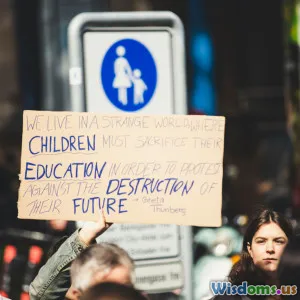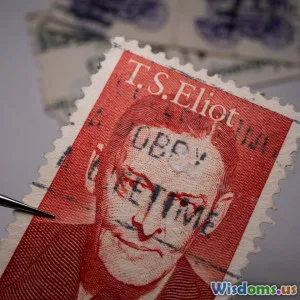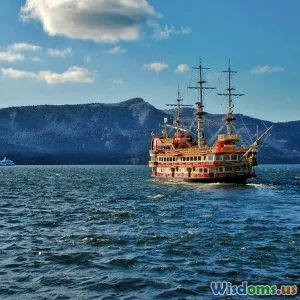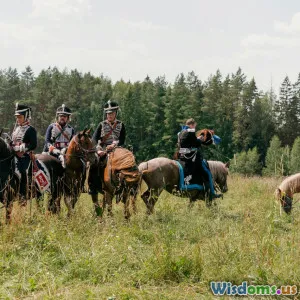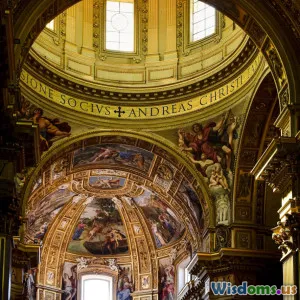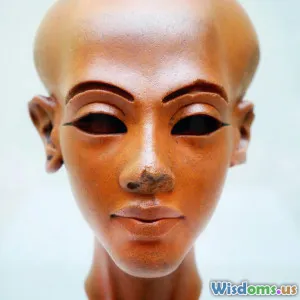
Secrets of Power: A Historical Insight
7 min read Discover the enigmatic power hidden within secret organizations throughout history and their lasting influence on society. (0 Reviews)
Secrets of Power: A Historical Insight
Introduction: The allure of hidden influence
Power often conjures images of kings, presidents, CEOs, and public figures. Yet, woven beneath the surface of recorded history lies a less visible, yet profound layer of influence—secret organizations and societies that have quietly shaped events, governments, and culture. This article unveils the historical insights behind these clandestine groups, revealing their strategies and impact that have kept the flames of power burning in the shadows.
From exclusive clubs of aristocrats to covert political networks, the secrets of power are embedded not only in what is seen but also in what is deliberately concealed. Understanding these hidden dynamics offers an intriguing lens into how societies have been directed across centuries.
The Genesis and Purpose of Secret Societies
Origins rooted in exclusivity and sanctity
Throughout history, humans have formed organizations to combine strength, share knowledge, or protect sacred beliefs. The earliest known secret societies reportedly date back to ancient Egypt and Greece. The Mystery Schools such as the Eleusinian Mysteries were guarded knowledge systems where initiates were sworn to secrecy, preserving esoteric wisdom.
Secret societies often emerged to safeguard information from persecution, foster solidarity among members, or influence political tides covertly.
Ancient examples worth highlighting
- The Pythagoreans: Combining philosophy, mathematics, and secrecy, this group upheld a strict code to maintain their knowledge pristine.
- The Roman Collegia: Some operated as discreet political factions influencing Empire dynamics beneath the mainstream Senate.
These groups were precursors to later more formal secret societies that wielded deeper political and social influence.
Medieval and Renaissance Era: The Rise of Strategic Influence
The Knights Templar: Military Might and Economic Power
One of the most famous medieval secret societies was the Knights Templar. Founded in 1119, their ostensible mission was to protect pilgrims but they also innovated in banking and finance, creating one of Europe’s earliest international banks. Their immense wealth and military power threatened kings and popes alike, culminating in their dramatic dissolution in the early 14th century.
Freemasonry: Symbolism and Networked Influence
In the early 18th century, Freemasonry emerged with deep symbolic rituals and philosophies espousing enlightenment ideals. Beyond the symbolic, Freemasonry created a broad, international network of influential individuals—politicians, intellectuals, and entrepreneurs—who used the fraternity as a channel for alliance-building and discreet influence.
Historians note that such secret organizations often operated as early lobbying groups or pressure networks before such concepts even existed publicly.
Modern Times: Secret Societies in Politics and Economics
The Illuminati and Myth vs. Reality
Perhaps the most mythologized secret society is the Bavarian Illuminati, founded in 1776. Originally aimed at promoting rationalism and fighting religious tyranny, it was disbanded just a decade later but sparked enduring theories of global conspiracy and control.
Though many claims are exaggerated or fictionalized, the Illuminati symbolizes society’s suspicion about unseen forces managing governments and economies.
Real-World Influence: The Bilderberg Group
Since 1954, the Bilderberg Group has held annual, invitation-only meetings among political leaders and influential business figures. Though not secret in existence, its closed-door policy spurs debate over how elite consensus shapes global agendas, ranging from economic policy to international strategy.
Intelligence Networks and Their Shadow Power
Secret operations like the CIA, MI6, or KGB reflect state-level secret societies in modern times, manipulating global power balances through clandestine operations. Understanding their historical roots can reveal how intelligence services shifted from espionage to subtle cultural and political manipulation.
The Mechanics of Power: How Secrets Maintain Control
Information control and narrative shaping
Secret societies thrive by controlling privileged information, deciding who gets access and when. This selective knowledge allocation creates an elite class of informed individuals who maneuver public narratives or policy.
Ritual and loyalty: Binding members deeper
The use of initiation rituals, symbols, and oaths enhances member commitment and discourages betrayal. This psychological mechanism has preserved secrecy and cohesion, allowing power to persist beyond generations.
Strategic alliances and patronage
Networks built through secret societies enable members to secure political appointments, business contracts, or social status, reinforcing power structures invisibly.
Controversies and Cultural Impact
Many secret societies are surrounded by controversy, from accusations of conspiracies to anti-democratic agendas. Yet, they have also contributed significantly to cultural, scientific, and political developments.
For example, some scholars credit Freemasonry with supporting ideas that fueled revolutions and inspired democratic thought.
Conclusion: Illuminating the Shadows
Secret organizations and societies have historically acted as silent architects behind some of humanity’s most transformative events. Though often shrouded in mystery and suspicion, their strategies—information control, network-building, and ritualistic cohesion—demonstrate timeless methods of accumulating and exercising power.
Understanding these hidden dynamics equips us with greater insight into the unseen forces that continue to influence the world today. While secrecy naturally breeds speculation, recognizing the historical realities stimulates informed perspectives rather than conjecture.
As modern society grows more transparent, the challenge remains: how do we balance the enigmatic allure and functional purpose of secrecy in shaping human affairs? The shadows of power persist but so does our pressing curiosity to reveal them.
“The most successful power is not the power that is overt, but that which is concealed in plain sight.” — Unknown
Rate the Post
User Reviews
Popular Posts










